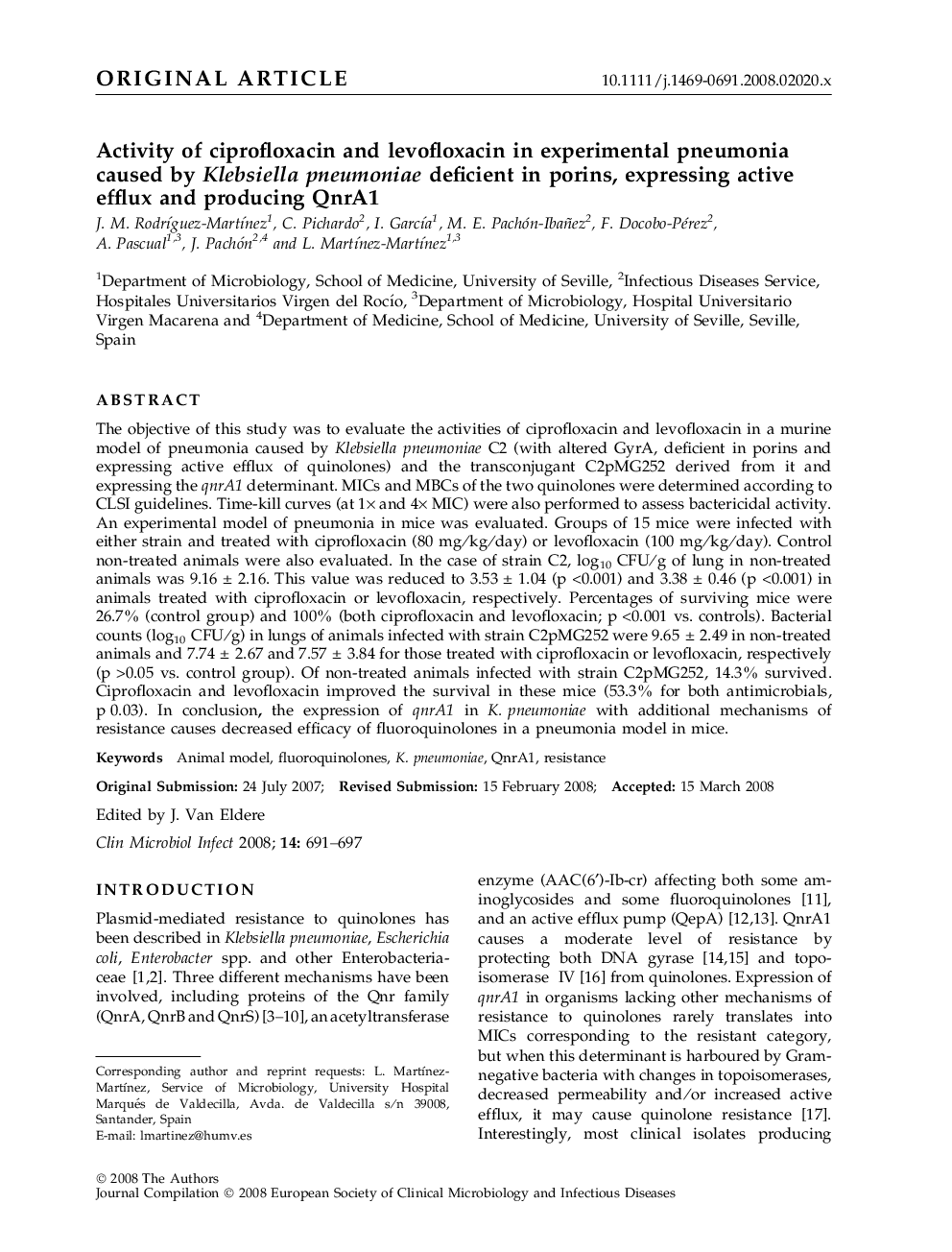| Article ID | Journal | Published Year | Pages | File Type |
|---|---|---|---|---|
| 3398587 | Clinical Microbiology and Infection | 2008 | 7 Pages |
ABSTRACTThe objective of this study was to evaluate the activities of ciprofloxacin and levofloxacin in a murine model of pneumonia caused by Klebsiella pneumoniae C2 (with altered GyrA, deficient in porins and expressing active efflux of quinolones) and the transconjugant C2pMG252 derived from it and expressing the qnrA1 determinant. MICs and MBCs of the two quinolones were determined according to CLSI guidelines. Time-kill curves (at 1× and 4× MIC) were also performed to assess bactericidal activity. An experimental model of pneumonia in mice was evaluated. Groups of 15 mice were infected with either strain and treated with ciprofloxacin (80 mg/kg/day) or levofloxacin (100 mg/kg/day). Control non-treated animals were also evaluated. In the case of strain C2, log10 CFU/g of lung in non-treated animals was 9.16 ± 2.16. This value was reduced to 3.53 ± 1.04 (p <0.001) and 3.38 ± 0.46 (p <0.001) in animals treated with ciprofloxacin or levofloxacin, respectively. Percentages of surviving mice were 26.7% (control group) and 100% (both ciprofloxacin and levofloxacin; p <0.001 vs. controls). Bacterial counts (log10 CFU/g) in lungs of animals infected with strain C2pMG252 were 9.65 ± 2.49 in non-treated animals and 7.74 ± 2.67 and 7.57 ± 3.84 for those treated with ciprofloxacin or levofloxacin, respectively (p >0.05 vs. control group). Of non-treated animals infected with strain C2pMG252, 14.3% survived. Ciprofloxacin and levofloxacin improved the survival in these mice (53.3% for both antimicrobials, p 0.03). In conclusion, the expression of qnrA1 in K. pneumoniae with additional mechanisms of resistance causes decreased efficacy of fluoroquinolones in a pneumonia model in mice.
